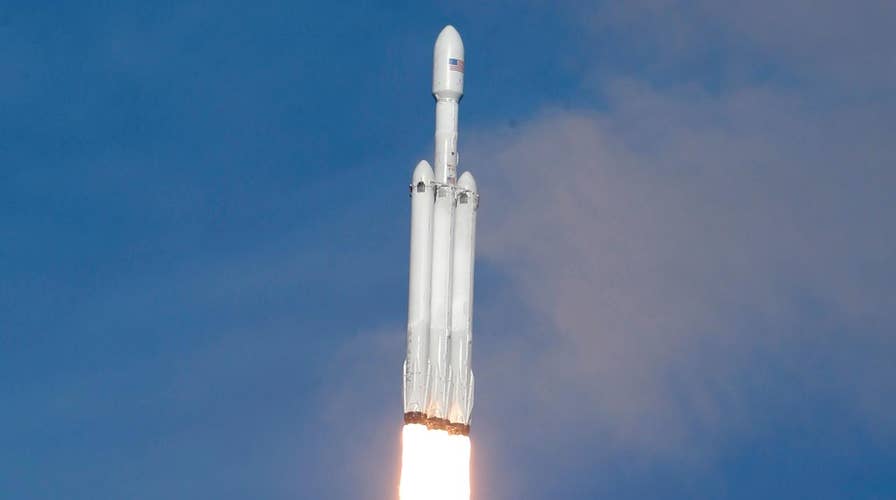SpaceX says it will fly private passenger 'around the Moon'
SpaceX is set to make a historic announcement, revealing the first private passenger to fly around the Moon on one of its spacecraft.
SpaceX's Starship hopper, a prototype of the $5 billion spacecraft that may eventually transport mankind to Mars, was knocked over and sustained damage after Texas winds broke the rocket's mooring blocks.
CEO Elon Musk tweeted about damage to the rocket, noting it would take a "few weeks to repair."
Damage was done to the nosecone of the prototype, a hollowed-out structure made of aluminum to give the appearance of an actual rocket. Musk added that the tanks did not suffer any damage from the windy conditions.
ELON MUSK TEASES WHAT SPACEX'S STARSHIP TEST VEHICLE WILL LOOK LIKE
The tweet below shows what the Starship prototype looked like after the heavy, sustained winds knocked over the nosecone.
The accident comes just a couple of weeks after Musk teased what the test vehicle would look like. The image shared by Musk harked to old sci-fi movies, with its ship featuring a shiny stainless steel body and an American flag.
Previously known as the BFR, the vehicle is slated to launch to suborbital heights in March or April. SpaceX has yet to respond to a request for comment if the accident would delay that timeline.
The Starship is SpaceX's upcoming two-stage reusable spaceship system that will weigh 9.7 million pounds and be capable of taking a 330,000-pound payload to Mars and lower-Earth orbit (LEO). The BFR, announced in September 2017, will eventually replace SpaceX's other launch vehicles, the Falcon 9 and Falcon Heavy, as well as its Dragon spacecraft. Musk has previously said the cost of development of the reusable craft was in the neighborhood of $5 billion.
ELON MUSK'S STARSHIP REVEALED: HOW IT COMPARES TO SPACEX'S OTHER POWERFUL SPACECRAFTS
In an interview in March 2018, Musk said: "I think we'll probably be able to do short flights, short sort of up-and-down flights, probably sometime in the first half of next year."
Shortly after the successful Falcon Heavy Launch, which occurred in early 2018, Musk said he expected a “full-scale test” of the massive rocket within the next few years.
If all goes well, the first manned flight to Mars could come as soon as the mid-2020s, Musk has previously said.
Earlier this month, SpaceX said it would lay off 10 percent of its workforce, according to the Los Angeles Times, which first reported the news. Additionally, SpaceX said in a regulatory filing that it had sold $273 million in equity, as part of a larger $500 million funding round.
In December, The Wall Street Journal reported that the company was worth $30 billion, making it one of the most valuable privately-held companies in America.
CLICK HERE TO GET THE FOX NEWS APP
Fox News' Christopher Carbone contributed to this report. Follow Chris Ciaccia on Twitter @Chris_Ciaccia





















